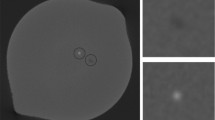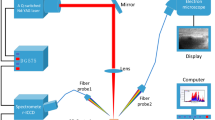Abstract
The geometrical quality assessment for additive manufacturing (AM) is a great challenge because of the complexity of AM parts and low repeatability of AM processes. Existing defect detection algorithms with 3D data mainly use features comprised of point-to-point distance difference between the design and manufactured objects. This study introduced discrete mean curvature measure, a new curvature feature, to capture macro-level information beyond the distances and incorporated it into the training data for machine learning (ML) algorithms. Five ML models (Bagging of Trees, Gradient Boosting, Random Forest, Linear SVM, and K-Nearest Neighbors) were implemented and compared on both synthetic and experimental data. This new curvature feature significantly improves the defect detection performance and improves the F-measure accuracy to as high as 94% on experimental AM barrel samples. Among the five ML models, Random Forest yields the best performance. A comprehensive and graphical tuning process of two important parameters in this method, the Number of Points in Each Patch and Radius of Curvature Calculation, is developed and can be implemented later by other practitioners.









Similar content being viewed by others
Availability of data and material
Data will be provided upon requests.
Code availability
Data will be provided upon requests.
References
Gibson I, Rosen D, Stucker B (2015) Additive manufacturing technologies: 3D printing, rapid prototyping, and direct digital manufacturing, 2nd edn. Springer, New York
Huang SH, Liu P, Mokasdar A, Hou L (2013) Additive manufacturing and its societal impact: a literature review. Int J Adv Manuf Technol 67(5–8): 1191–1203. Springer
Attaran M (2017) The rise of 3-D printing: The advantages of additive manufacturing over traditional manufacturing. Bus Horiz 60(5):677–688
Kim H, Lin Y, Tseng TLB (2018) A review on quality control in additive manufacturing. Rapid Prototyp J 24(3):645–669
Lott H, Schleifenbaum W, Meiners K, Wissenbach CH, Bültmann J (2011) Design of an optical system for the in situ process monitoring of Selective Laser Melting (SLM). Phys Procedia 12(PART 1):683–690
Ha CW, Yang DY (2014) Fabrication of micro open structure using 3D laser scanning method in nano-stereolithography. In 2014 International Conference on Manipulation, Manufacturing and Measurement on the Nanoscale, 3M-NANO 2014 - Conference Proceedings 299–303
Zeng K, Pal D, Stucker B (2012) A review of thermal analysis methods in laser sintering and selective laser melting. 23rd Annu. Int Solid Free Fabr Symp - An Addit Manuf Conf SFF 2012 796–814
Benda JA (1994) Temperature-controlled selective laser sintering. DTICDocument 277–284.
Cohen A, Laviv A, Berman P, Nashef R, Abu-Tair J (2009) Mandibular reconstruction using stereolithographic 3-dimensional printing modeling technology. Orak Surgert Oral Med Oral Pathol Oral Radiol Endodontology 108(5):661–666
Yadroitsev I, Krakhmalev P, Yadroitsava I (2014) Selective laser melting of Ti6Al4V alloy for biomedical applications: temperature monitoring and microstructural evolution. J Alloys Compd 583:404–409
Sarghie B, Costea M, Liute D (2013) Anthropometric study of the foot using 3d scanning method and statistical analysis
Sood AK, Ohdar RK, Mahapatra SS (2009) Improving dimensional accuracy of fused deposition modelling processed part using grey Taguchi method. Mater Des 30(10):4243–4252
Campbell RI, Martorelli M, Lee HS (2002) Surface roughness visualisation for rapid prototyping models. CAD Comput Aided Des 34(10):717–725
Sitthi-Amorn P et al (2015) MultiFab: a machine vision assisted platform for multi-material 3D printing. ACM Trans Graph 34(4)
Tang P, Akinci B, Huber D (2008) Characterization of three algorithms for detecting surface flatness defects from dense point clouds. In Three-Dimensional Imaging Metrology 7239:72390N
Huang D, Du S, Li G, Zhao C, Deng Y (2018) Detection and monitoring of defects on three-dimensional curved surfaces based on high-density point cloud data. Precis Eng 53:79–95
Dastoorian R, Elhabashy AE, Tian W, Wells LJ, Camelio JA (2018) Automated surface inspection using 3D point cloud data in manufacturing: a case study. Manuf Equip Syst 3:V003T02A036
Delli U, Chang S (2018) Automated process monitoring in 3D printing using supervised machine learning. Procedia Manuf 26:865–870
Gobert C, Reutzel EW, Petrich J, Nassar AR, Phoha S (2018) Application of supervised machine learning for defect detection during metallic powder bed fusion additive manufacturing using high resolution imaging. Addit Manuf 21:517–528
Scime L, Beuth J (2019) Using machine learning to identify in-situ melt pool signatures indicative of flaw formation in a laser powder bed fusion additive manufacturing process. Addit Manuf 25:151–165
Li R, Jin M, Paquit VC (2021) Geometrical defect detection for additive manufacturing with machine learning models. Mater Des 109726
Golkar E, Prabuwono AS, Patel A (2012) Real-time curvature defect detection on outer surfaces using best-fit polynomial interpolation. Sensors 12(11):14774–14791
EinScan-SP. [Online]. Available: https://www.einscan.com/desktop-3d-scanners/einscan-sp/
Zhou QY, Park J, Koltun V (2018) Open3D: a modern library for 3D data processing [Computer Software]
Opitz D, Maclin R (1999) Popular ensemble methods: an empirical study. J Artif Intell Res 11:169–198
Zhihua Z (2012) Book Review: ensemble methods: foundations and algorithms. IEEE Intell Informatics Bull 13
Breiman L (1997) Arcing the edge. Accessed 5 March 2022
Amit Y, Geman D (1997) Shape quantization and recognition with randomized trees. Neural Comput 9(7):1545–1588
Cortes C, Vladimir V (1995) Support-vector networks. Mach Learn 20:273–297
Arian R, Hariri A, Mehridehnavi A, Fassihi A, Ghasemi F (2020) Protein kinase inhibitors’ classification using K-Nearest neighbor algorithm. Comput Biol Chem 86:107269
Galar M, Fernández A, Barrenechea E, Bustince H, Herrera F (2011) A review on ensembles for the class imbalance problem: bagging-, boosting-, and hybrid-based approaches
Japkowicz N, Stephen S (2002) The class imbalance problem: a systematic study. Intell Data Anal 6(5):429–449
Chawla NV, Bowyer KW, Hall LO, Kegelmeyer WP (2002) SMOTE: synthetic minority over-sampling technique. J Artif Intell Res 16:321–357
Moreo A, Esuli A, Sebastiani F (2016) Distributional random oversampling for imbalanced text classification. In SIGIR 2016 - Proceedings of the 39th International ACM SIGIR Conference on Research and Development in Information Retrieval 805–808
Lemaître G, Nogueira F, Aridas CK (2017) Imbalanced-learn: a python toolbox to tackle the curse of imbalanced datasets in machine learning. J Mach Learn Res 18(17):1–5
Opitz DW, MacLin RF (1997) “An empirical evaluation of bagging and boosting for artificial neural networks”, IEEE Int. Conf Neural Networks - Conf Proc 3:1401–1405
Biau G, Scornet E (2016) A random forest guided tour. TEST 25(2):197–227
Arora A, Gupta B, Uttarakhand P, Rawat IA (2017) Analysis of various decision tree algorithms for classification in data mining cite this paper Related papers Analysis of Classificat ion Techniques in Dat a Mining. ijesrt journal Dat a Mining Applicat ion in Enrollment Management : A Case St udy Saurabh. Int J Comput Appl 163(8):975–8887
Zhang JP, Li ZW, Yang J (2005) A parallel SVM training algorithm on large-scale classification problems. 2005 Int Conf Mach Learn Cybern ICMLC 2005(August):1637–1641
Ray S (2019) A quick review of machine learning algorithms. Proc Int Conf Mach Learn Big Data Cloud Parallel Comput Trends Prespectives Prospect Com 35–39
Author information
Authors and Affiliations
Contributions
Rui Li and Mingzhou Jin contributed to the study conception and design. Material preparation, data collection, and analysis were performed by Rui Li. The first draft of the manuscript was written by Rui Li, and all authors commented on previous versions of the manuscript. All authors read and approved the final manuscript.
Corresponding author
Ethics declarations
Ethics approval
Not applicable.
Consent to participate
Not applicable.
Consent for publication
Not applicable.
Conflict of interest
The authors declare no competing interests.
Additional information
Publisher's Note
Springer Nature remains neutral with regard to jurisdictional claims in published maps and institutional affiliations.
Rights and permissions
About this article
Cite this article
Li, R., Jin, M., Pei, Z. et al. Geometrical defect detection on additive manufacturing parts with curvature feature and machine learning. Int J Adv Manuf Technol 120, 3719–3729 (2022). https://doi.org/10.1007/s00170-022-08973-z
Received:
Accepted:
Published:
Issue Date:
DOI: https://doi.org/10.1007/s00170-022-08973-z




